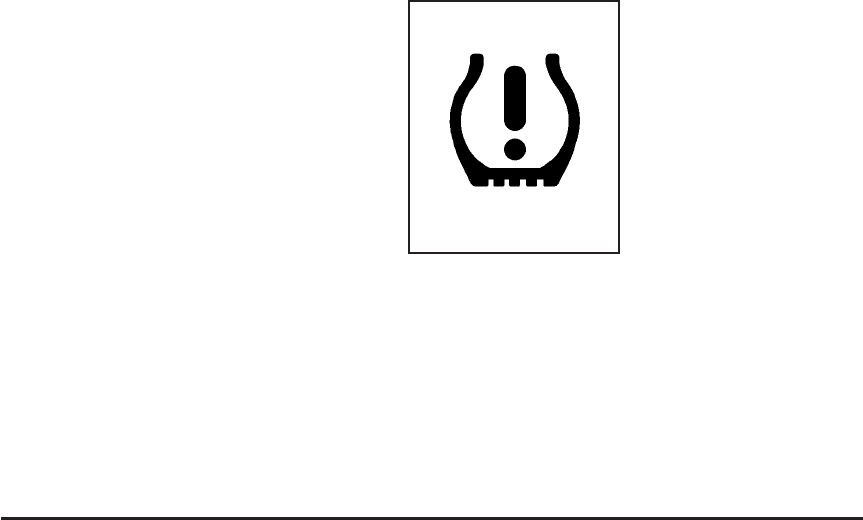
If your vehicle has the DIC feature, a message
to check the pressure in a specific tire also
appears on the DIC display. The low tire pressure
warning symbol on the instrument panel cluster
and the CHECK TIRE PRESSURE warning
message on the DIC display appears at each
ignition cycle until the tires are inflated to
the correct inflation pressure. For additional
information and details about the DIC operation
and displays see DIC Operation and Displays
(With DIC Buttons) on page 229 or DIC Operation
and Displays (Without DIC Buttons) on page 235
and DIC Warnings and Messages on page 239.
You may notice, during cooler weather conditions,
the tire pressure monitor light, located on the
instrument panel cluster, and the CHECK TIRE
PRESSURE message appears when the vehicle is
first started and then turn off as you start to
drive the vehicle. This could be an early indicator
that the tire pressures are getting low and
need to be inflated to the proper pressure.
Each tire, including the spare (if provided), should
be checked monthly when cold and inflated to
the inflation pressure recommended by the vehicle
manufacturer on the vehicle placard or tire
inflation pressure label. (If your vehicle has tires of
a different size than the size indicated on the
vehicle placard or tire inflation pressure label, you
should determine the proper tire inflation
pressure for those tires.)
As an added safety
feature, your vehicle
has been equipped with
a tire pressure
monitoring system
(TPMS) that illuminates
a low tire pressure
telltale when one
or more of your tires is
significantly
under-inflated.
Accordingly, when the low tire pressure telltale
illuminates, you should stop and check your tires
as soon as possible, and inflate them to the
proper pressure. Driving on a significantly
under-inflated tire causes the tire to overheat and
can lead to tire failure. Under-inflation also
reduces fuel efficiency and tire tread life, and may
affect the vehicle’s handling and stopping ability.
434


















